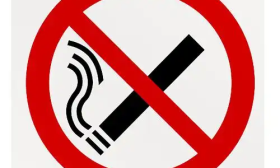The Unseen Link: How Smoking Disrupts HDL and LDL Cholesterol Balance
We often hear about the dangers of smoking in relation to lung cancer and heart disease. The image of damaged lungs is a powerful deterrent. However, a more insidious and complex battle is being waged within the bloodstream of every smoker, one that directly disrupts the very foundation of cardiovascular health: the delicate balance of our cholesterol system. This battle centers on a critical condition known as a high-low density lipoprotein metabolism disorder, a phrase that might sound clinical but simply refers to a dysfunctional cholesterol management system in the body. The connection between smoking and abnormal lipid profiles is not just a correlation; it is a direct cause-and-effect relationship that significantly accelerates the risk of atherosclerosis, heart attacks, and strokes.
To understand this, we must first demystify the key players: LDL (Low-Density Lipoprotein) and HDL (High-Density Lipoprotein). LDL is often dubbed "bad" cholesterol, but it's more accurate to think of it as a delivery truck. Its job is to transport cholesterol from the liver, where it's produced, to various cells throughout the body that need it for building membranes and producing hormones. The problem arises when there is too much LDL cruising the bloodstream. It can deposit its cholesterol cargo into the walls of our arteries, forming fatty plaques—a process known as atherosclerosis.
HDL, or "good" cholesterol, acts as the cleanup crew. It functions in reverse cholesterol transport, a vital process where it scavenges excess cholesterol from the artery walls and tissues and carries it back to the liver for disposal or recycling. Think of HDL as the street sweeper that cleans up after the LDL delivery trucks. A healthy system maintains a balance: limited LDL delivery and efficient HDL cleanup. A high-low density lipoprotein metabolism disorder occurs when this balance is shattered—when LDL levels are too high, HDL levels are too low, or, most dangerously, both.
This is precisely where smoking wreaks its havoc. The thousands of chemicals in tobacco smoke, particularly nicotine and oxidizing agents, don't just pass through the lungs; they enter the bloodstream and initiate a cascade of destructive events.
The Assault on HDL: Sabotaging the Cleanup Crew
One of the most consistent and damning effects of smoking is its impact on HDL cholesterol. Smokers consistently exhibit lower levels of this protective lipoprotein. But how does this happen?
-
Reduced HDL Production and Altered Composition: Smoking appears to interfere with the body's ability to produce mature, functional HDL particles. The liver's synthesis of the primary component of HDL, ApoA-I, can be suppressed. Furthermore, the HDL that is produced in smokers is often structurally different—it's smaller, denser, and less effective at performing its reverse cholesterol transport duties. This means even if the HDL number looks somewhat acceptable on a test, its functionality is compromised, leading to a state of impaired reverse cholesterol transport.

-
Accelerated HDL Clearance and Degradation: Smoking increases the activity of an enzyme called hepatic lipase. This enzyme breaks down HDL particles at a faster rate, clearing them from the bloodstream before they can complete their cleanup tasks. It's like firing the street sweeper before its shift is over. This contributes directly to the link between cigarette use and low HDL levels.
The Attack on LDL: Creating a Traffic Jam of Bad Cholesterol
While smoking undermines the good cholesterol, it simultaneously supercharges the bad.
-
LDL Oxidation: This is perhaps the most critical mechanism. The free radicals and oxidizing chemicals in tobacco smoke directly attack LDL particles in the blood. When LDL becomes oxidized, it is no longer just a benign delivery truck. It becomes a recognized enemy. The body's immune system sends macrophages (a type of white blood cell) to engulf this oxidized LDL. These macrophages, now stuffed with fat, become what are known as "foam cells," which are the primary building blocks of the arterial plaques that characterize atherosclerosis. This process of LDL oxidation due to smoking is a central step in initiating cardiovascular damage.
-
Increased LDL Levels and Persistence: Smoking can lead to modest increases in the actual concentration of LDL in the blood. It also makes the LDL particles themselves "stickier" and more prone to getting trapped in the arterial walls. Moreover, some research suggests that smoking may slow down the clearance of LDL from the bloodstream, allowing these harmful particles to circulate longer and cause more damage.
The Systemic Chaos: Inflammation and Endothelial Dysfunction
The disruption of HDL and LDL cannot be viewed in isolation. Smoking creates a state of chronic, low-grade inflammation throughout the cardiovascular system. It damages the endothelium, the delicate, single-celled lining of all blood vessels. A healthy endothelium helps keep blood flowing smoothly and prevents plaques from forming. A damaged endothelium, however, is sticky, inflamed, and dysfunctional, making it a magnet for oxidized LDL and less responsive to the protective signals from HDL.
This creates a vicious cycle: smoking damages the endothelium, which allows more oxidized LDL to accumulate. The low and dysfunctional HDL cannot effectively perform its cleanup role, and the ongoing inflammation fuels the entire process. This perfect storm is the essence of a severe high-low density lipoprotein metabolism disorder. The impact of tobacco on cholesterol metabolism is therefore systemic, affecting not just the lipoproteins themselves but the entire environment in which they operate.
The Silver Lining: The Power of Cessation
The most encouraging aspect of this grim picture is that it is largely reversible. The human body possesses a remarkable capacity to heal once the insult of smoking is removed.
Studies have consistently shown that quitting smoking leads to rapid and significant improvements in the lipid profile. HDL levels begin to rebound, often within just a few weeks. The functionality of HDL improves as reverse cholesterol transport mechanisms are restored. The burden of oxidized LDL decreases as the onslaught of free radicals from smoke ceases. Inflammation subsides, and the endothelium begins to repair itself.
This reversal of smoking-induced dyslipidemia is one of the most powerful cardiovascular benefits of quitting. It doesn't matter how long or how much a person has smoked; the body will start to correct the metabolic disorder in smokers' cholesterol levels almost immediately. The risk of heart disease begins to drop precipitously and can eventually approach that of a never-smoker.
In conclusion, the connection between smoking and a disordered cholesterol system is profound and multifaceted. It is not a single blow but a sustained campaign that undermines our body's natural protective mechanisms (HDL) while empowering its destructive ones (LDL). By understanding the connection between smoking and cardiovascular disease risk through this lens of lipoprotein metabolism, we can better appreciate the full scope of smoking's danger. It's a story written not just in tar-stained lungs, but in the altered chemistry of our blood, a story of disrupted balance that, thankfully, can have a new ending written with the single decision to quit.













